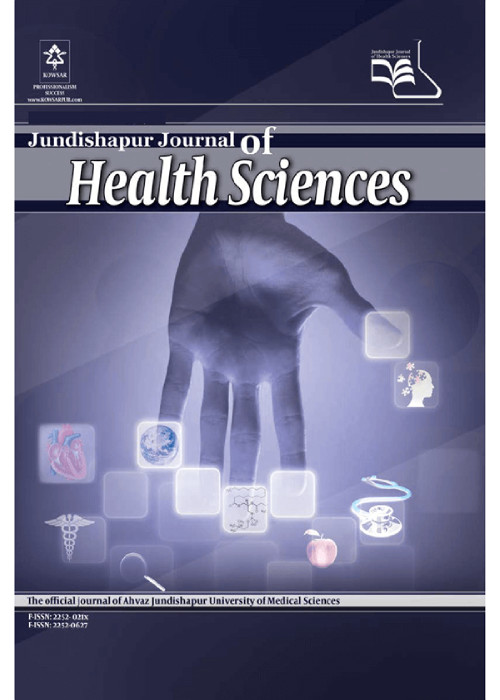Effects of pH on the Kinetics of Methyl Tertiary Butyl Ether Degradation by Oxidation Process (H2O2/Nano Zero-Valent Iron/Ultrasonic)
Author(s):
Abstract:
Background
In advanced oxidation processes, pH has a significant effect on the removal efficiency of organic compounds. This study examined the effect of pH changes on the removal efficiency and kinetics of methyl tertiary butyl ether (MTBE) concentration in aquatic environment..Objectives
The primary objective of this study was to evaluate the effect of pH changes on removal kinetics of the mentioned compound, using H2O2/nZVI (nano zero-valent iron)/ultrasonic process, and its impact on the reaction rate..Materials And Methods
In order to create the right conditions for oxidation, first of all iron nanoparticles combined with H2O2 oxidizer were synthesized, and then they were subjected to ultrasound waves and used in MTBE oxidation. In MTBE removal via H2O2/nZVI/Ultrasonic process, the effects of some parameters such as contact time (2 to 60 minutes), concentration of hydrogen peroxide (5 to 20 mL/L), concentrations of nZVI (0.15 to 0.45 g/L), MTBE concentrations (50 to 750 mg/L), and pH (2 to 9) were investigated. MTBE concentration analysis was performed using gas chromatography (GC)..Results
According to this study, the best removal efficiency of 50 mg/L MTBE concentration in 89.56% under oxidation condition occurred when H2O2 level equals to 10 mL/L, nZVI is 0.25 g/L at pH 3.5. The results showed that the increase or decrease of pH from 3.5 results in a loss of oxidation efficiency as well as reduction in the amount of kap. In addition, the logarithmic changes curve of MTBE concentration showed that MTBE oxidation in H2O2/nZVI/ultrasonic method follows pseudo first order reactions..Conclusions
Changes of pH could remarkably affect the efficiency and oxidation rate of MTBE. In particular, the amount of kap in terms of oxidation declines substantially by moving away from the optimum pH range. In this study, pH 3.5 was considered as the optimal pH in H2O2/nZVI/ultrasonic oxidation process, with the elimination of about 89.56% of the high MTBE concentration. In general, we can say that by adjusting pH in this range, the rate and efficiency of MTBE oxidation can be enhanced in H2O2/nZVI/ultrasonic method..Language:
English
Published:
Jundishapur Journal of Health Sciences, Volume:7 Issue: 3, Jul 2015
Page:
8
magiran.com/p1441055
دانلود و مطالعه متن این مقاله با یکی از روشهای زیر امکان پذیر است:
اشتراک شخصی
با عضویت و پرداخت آنلاین حق اشتراک یکساله به مبلغ 1,390,000ريال میتوانید 70 عنوان مطلب دانلود کنید!
اشتراک سازمانی
به کتابخانه دانشگاه یا محل کار خود پیشنهاد کنید تا اشتراک سازمانی این پایگاه را برای دسترسی نامحدود همه کاربران به متن مطالب تهیه نمایند!
توجه!
- حق عضویت دریافتی صرف حمایت از نشریات عضو و نگهداری، تکمیل و توسعه مگیران میشود.
- پرداخت حق اشتراک و دانلود مقالات اجازه بازنشر آن در سایر رسانههای چاپی و دیجیتال را به کاربر نمیدهد.
In order to view content subscription is required
Personal subscription
Subscribe magiran.com for 70 € euros via PayPal and download 70 articles during a year.
Organization subscription
Please contact us to subscribe your university or library for unlimited access!


